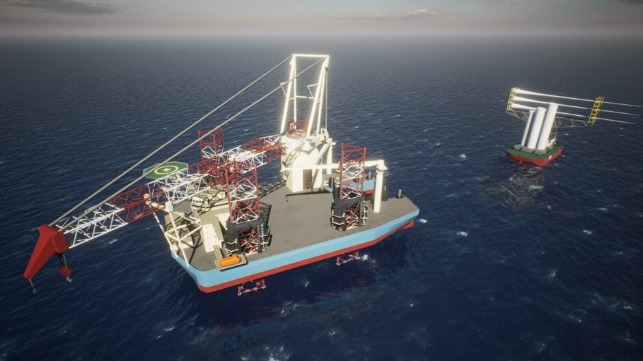Maersk and Kirby Awarded Beacon Wind Installation

Beacon Wind, an offshore wind farm being developed by Equinor and bp, has selected Maersk Supply Service in partnership with Kirby Offshore Wind, a subsidiary of Kirby Corporation, to lead the installation planned to begin in 2028 off the coast of Massachusetts. It is the latest in the growing number of assignments for the shipping industry, and parallel contracts for the shipbuilders, as momentum builds in the offshore wind energy sector.
Maersk Supply Service announced today that it has been awarded the Preferred Supplier Agreement for the Beacon Wind project as the second U.S. wind contract for its new wind installation vessel. The contract is seen as an extension from the first award which also came from Equinor and bp for the installation at the Empire Wind site, which they expect to start in late 2025 or early 2026.
To meet the Jones Act requirements. Kirby will provide barge transportation services for offshore wind towers and turbines to Maersk Supply Service. The agreement was announced in March and at the time Kirky said the Empire Wind projects were the first in a 20-year framework agreement.
As part of the new award for Beacon Wind, Kirky plans to build a third barge that will transport the materials to the installation sites. Kirby reported in March that it would be investing in two new ABS-classed feeder barge and diesel-electric hybrid tugboat units that will be constructed in U.S. shipyards for a total combined cost of between $80 million to $100 million. Each feeder barge will have the capacity to transport next-generation turbines of 15 megawatts and higher as turbine technology advances.
“With this new agreement, we have secured a stable start for our new wind installation vessel,” said Jonas Munch Agerskov, Chief Commercial Officer at Maersk Supply Service commented on the awarding of the Beacon Wind project. “We are very pleased that Equinor and bp have shown us the trust to extend the award and look forward to future collaboration.”
Plans call for two phases each at both the Empire Wind and later the Beacon Wind projects. Both are still in the permitting phase. When combined, the first three projects under development by Equinor and bp, Empire Wind 1, Empire Wind 2, and Beacon Wind 1, will produce about 3.3 gigawatts of power. They expect that Beacon Wind 2 would be similar in size to Beacon Wind 1, which is slated to have a capacity of 1.23 GW.
The installation work will be carried out by a uniquely designed installation vessel that Maersk Supply Service reports will be over 30 percent more efficient than conventional jack-up vessels. Using the feeder approach with Kirby, the installation vessel will stay on location for the duration of the installation, while only the tugs and barges ferry to and from the coast. The approach is less weather-dependent, allowing year-round operation. The barges dock at the installation vessel and are locked in place to stabilize the platform with a tray with turbine components elevated off the barge and positioned on the installation vessel. The barges repeat the trips from shore while the installation continues using materials from the racks.
Construction for the installation vessel to be built in Singapore by SembCorp Marine is expected to being before the end of 2022. The vessel is due to arrive in U.S. waters in 2025.
